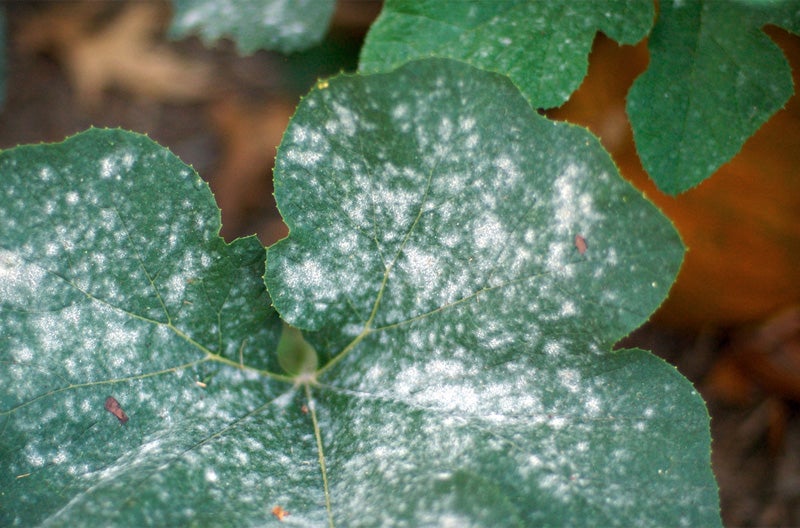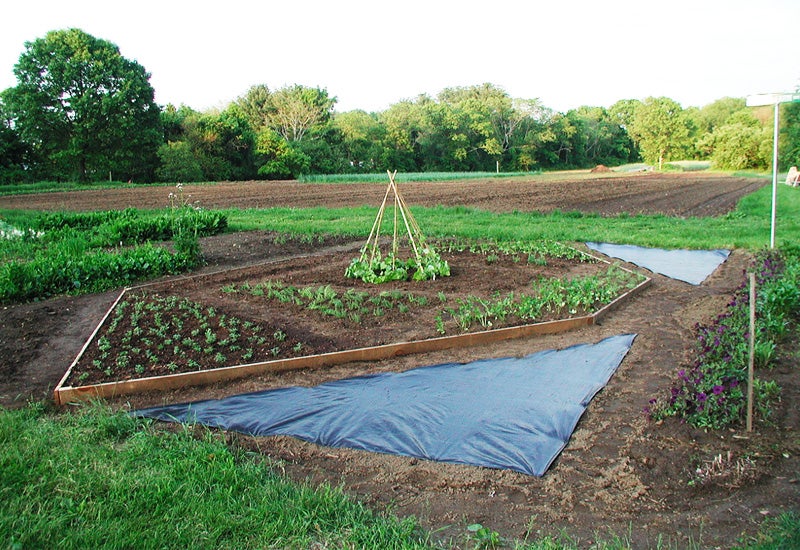Did this miserable winter wipeout mildew and blight?
ListenMike McGrath chats with listeners about tamarind trees, how to build and fill a raised bed garden, how to plant for privacy, the best way to get rid of ivy, maintaining a daffodil display, the importance of rotating or mixing crops, a rose care regime and whether this winter has wiped out mildew and blight.
Question of the Week:
“Last year we didn’t plant impatiens because of a disease that Mike warned us about. Does that hold for this year, too?”
— Barb in Arlington, VA
“Are there any tomato varieties that are less susceptible to late summer blight—where the leaves of the plants progressively turn yellow and brown from the bottom up?”
— Tony in Fairfax, Virginia
What to expect this season in mildew and blight »
Highlights from show for April 12, 2014:
Triumphant tamarind trees
Tom calls from Christiansted on St. Croix in the U.S. Virgin Islands looking for advice on a major public works project: Replacing an asphalt public parking lot with a semi-permeable green surface to control run-off. But Tom is also wants to protect the mature tamarind trees growing in and around this public lot. Mike shares Tom’s concerns: “The tamarind is almost considered an invasive species in some places because of its aggressive root system. So I think these trees, to compensate for their kind of land-locked position, probably have a lot of access to moisture underneath the asphalt just because of their extensive root system. I think if you started to pull up asphalt you’d see roots all over the place!” He advises Tom that any major project would most likely destroy the vast root systems that are currently sustaining these beautiful trees. Mike thinks these trees are a helpful reminder that despite all human-made obstacles trees do want to grow!
“The tamarind is almost considered an invasive species in some places because of its aggressive root system. So I think these trees, to compensate for their kind of land-locked position, probably have a lot of access to moisture underneath the asphalt just because of their extensive root system. I think if you started to pull up asphalt you’d see roots all over the place!”
Mike McGrath
-

Photo submitted by caller
Filling a raised bed with safe soil
Gail from Hamilton, New Jersey just retired and she wants to get back into gardening. She’s building a raised bed garden and calls Mike for advice on what to fill her beds with. Gail would prefer to get her compost from a municipal site like Mike suggests, but she is very concerned about the herbicides and pesticides that linger even in properly composted materials. Mike explains that she can do a very easy test with a bucket of soil from her local facility. Fill two test pots with soil, put them in a sunny spot outside, and label them A and B. Pot A tests if the compost is weedy because with regular watering Gail will see if any weeds come up in this pot. By planting pea seeds in Pot B, Gail will be able to tell if any herbicides are present in the compost. If the pea shoots grow quickly and strongly, the compost is fine to use. Mike says: “Luckily research has shown us that peas are the canary in a coal mine when it comes to these persistent herbicides.” Mike reminds Gail to fill her raised bed with a healthy mix of half compost, half screened black top soil, and some pearlite for ventilation.
Planting for privacy
Don from West Windsor, New Jersey wants to plant near his mature pine trees. During a recent house-sitting visit, Don’s father-in-law enthusiastically trimmed the lower branches from these trees and Don is hoping to restore some privacy to this area of the yard. Mike is concerned that any major planting might disturb the old and established pine trees and suggests that Don consider putting in planters instead of adding shrubs. Mike says: “So it sounds like your area is absolutely perfect for you to install a couple of matching planters, one on each side of the tree, and this way you can use the planters themselves, make them two or three feet high, to block the view and then what I would do is I would install shade-loving flowers in them during all the parts of the growing season.” Mike suggests that begonias would do a great job of growing tall and adding beautiful colors to the yard. Hardy, small Alpine trees might also add a beautiful year-round interest.
Getting rid of ivy
Kenny from Aston, Pennsylvania has a problem with English Ivy. It’s taken over his whole lawn and he wants to eradicate it without using any chemicals so he can put in a raised garden, a grape arbor, and a raspberry patch. “Luckily we’ve had one of the wettest winters in history … You’re going to do best by pulling the ivy out of the ground while the soil is still soaking wet.” Since Kenny thinks that there’s some construction waste lurking under this ivy, Mike suggests he get his soil tested before he plants his grapes and raspberries.
Creating an outdoor labybug trap
Richard from Nashville, Tennessee planted a whole bed of yellow daffodils. The first year they were gorgeous, but the next year only a few bloomed. And even more perplexingly they had yellow centers and bright white petals! Richard calls Mike to ask about the cause of this conundrum. Mike thinks it’s an issue of breeding: “I can only imagine that some kind of cross pollination went on in between seasons, that some of your daffodils weren’t purebred and there’s a recessive gene that came out. That’s my best guess! Bulbs changing color usually means that the majority of the bulbs you planted have died off and been replaced by squirrels with something else!” Mike reminds Richard to clip off the
fading flowers, feed the bulbs with compost tea, and allow the leaves to die down after their spring blossoming.
Rotating or mixing crops in a raised bed garden
This year Kathy from Dayton, Ohio made the switch to a raised bed garden. She calls Mike to ask about rotating crops in her beds to prevent wilts and infestations. When Mike hears that Kathy plans to plant one bed full of tomatoes, one full of zucchini, and another full of lettuces, he encourages her to mix things up in her beds from the start: “Studies have clearly shown us that by mixing the crops in each bed, as opposed to creating little monocultures, you greatly reduce the possibility of pest and disease problems … Let’s say you have a bed full of eggplant and the flea beetles find you. Well, they’re just going to go from that first plant to all the others in about forty-five seconds! Whereby if you have an eggplant in each of your beds maybe with some big crops in between the flea beetles that get one of your plants may not even know that there’s another plant down in the neighborhood next-door.² As for crop rotation, Mike thinks tomatoes are the only plant Kathy really needs to monitor and move each year to prevent wilts. He also reminds her about the succession planting benefits of a raised bed and that she can fill her beds with cold-weather loving lettuces very soon and harvest them in time to plant summer vegetables.
Rose care regime
Martha from Muncie, Indiana has several roses including a climbing peace rose and pink and red old roses and all her plants are suffering from black spot. Martha calls Mike looking for an organic solution to this problem. After Martha explains how she’s pruned, chemically fed, and mulched her roses, Mike suggests a complete and radical new rose-care plan: In the spring, prune roses to stimulate growth and create airflow by removing old and dead canes, after pruning feed roses with two inches of yard waste compost, and never treat roses with mulch or chemicals. Mike explains: “Disease depends on lack of air movement and it also depends on wood mulch which is the ultimate breeder of disease.” Mike thinks that Martha’s roses will thrive this year once after mulch removal and proper pruning.
— This week’s post was written by Marissa Nicosia, You Bet Your Garden intern
WHYY is your source for fact-based, in-depth journalism and information. As a nonprofit organization, we rely on financial support from readers like you. Please give today.





